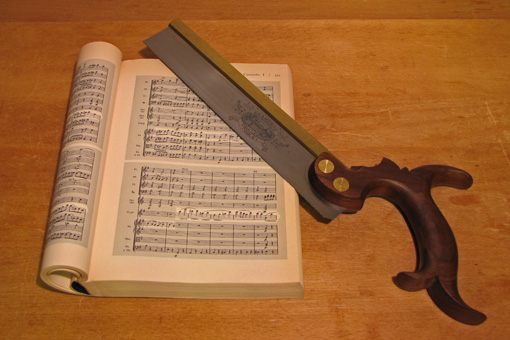Remember the old joke about the lost tourist in New York City who asks a local, “How do I get to Carnegie Hall?” The reply: “practice, practice . . .”
I am sometimes asked by novice woodworkers how best to acquire and practice skills. Well, aside from exploiting the myriad sources in media and in person, one must get into the shop, practice, and make sawdust. The inquiry truly applies to woodworkers at all general skill levels who are broadening or deepening their involvement in the craft. Woodworking is a vast field and no one is an expert at all phases, so skill acquisition is an ongoing issue for all of us.
Here is my suggested approach. Let’s say one wants to learn hand cut dovetailing. I would start with isolating the process. Prepare some short pieces of easy-going poplar and cut joints. Ponder and practice layout, sawing to lines, chopping, and so forth. Think about what went wrong, tune your tools, test the limits of accuracy, and experiment. This is like practicing scales in learning a musical instrument. I would not start with a drawer, or even a box, because that creates too many distractions from the core technique.
However, I would soon, very soon, make something with dovetails. It should be a simple, manageable project that might generate some discomfort but not beyond what you feel you can reasonably handle. I would not await perfection in “practicing scales” because there is no such thing, it will be boring, and sooner or later, you have to integrate that core skill into making a bit of music. The music makes the skill meaningful.
So make a little etude piece of woodwork. Simple can be interesting. It will not end up on the back cover of Fine Woodworking. So what. It will contain some mistakes and you won’t be able to correct all of them. So what. It will, however, be yours and will bring you some quiet joy.
Forging ahead, try a small drawer. Now your dovetail “scales” and “etude” experiences will be used to make another box, but this time it will have to fit neatly into a case, which itself will have to be properly constructed if there is to be any chance at all of a good fit. You are integrating skills and they are thus becoming more meaningful.
You will be subtly adapting your dovetail skills to suit a more complex construction. Your designs, aesthetic desires, and the functional requirements of the piece beckon for further refinement of the core skill. Thus you are developing beyond a technician to a craftsman. The music’s beauty is the ultimate impetus to the dance of the fingers on the strings. This is fine woodworking that embraces technique but with a purpose beyond technique: to create a fulfilling piece of personal woodwork.
I think I am a good self-teacher, but at various times I’ve made mistakes at all of these stages. I’ve dwelled too long on isolated technique, overreached in attempting projects I wasn’t ready for, and inhibited my design ideas from fear of breaking new technical ground. That’s the other thing about practicing and getting good at woodworking, you will never stop making mistakes. You will, however, understand them and know what to do despite them.
Happy woodworking indeed!



“you will never stop making mistakes. You will, however, understand them and know what to do despite them”. Rob, great perspective and the quote is really powerful when you think about it. As I think back, I was so reluctant to try sharpening a tool because I just knew I would screw it up, and the same thought process applied with dovetails, turning on a lathe, etc. Maybe it was my own high expectation settings, maybe it was reading about those regarded as “masters” in working wood and figuring my work would never be as good as theirs, but know, many mistakes later, I can accept my current skill level, understand the mistake, and figure out how to correct it. Working wood, music, golf, cooking, whatever the endevor, we are always learning. Thanks for the post. Rick
Rick,
Thanks for the comment. We’re all students.
Rob
Rob
Thanks so much for the blog about getting around to making something instead of practicing. I am a cellist who has been practicing dovetails for weeks, since my class on them. I went and made a drawer for my shop cabinets and it turned out just right! Not pretty but I did it. My etudes have become a piece of music and I can take it to the next step! Thanks for all you are doing to inspire us.
John Burton
John,
Thanks for the wonderful comment which, in turn, inspires me to continue writing. Best wishes for your woodworking.
Rob
Rob,
I’ll have to admit that you had my curiosity up with the title and then the picture of the saw on top of the book pages.
Then it all made sense when you said this: “Think about what went wrong, tune your tools, test the limits of accuracy, and experiment. This is like practicing scales in learning a musical instrument.”
I think that is excellent advice for anyone who wants to get better at woodworking. Generally speaking, I definitely spend too much time watching and reading and not enough time digging in and making mistakes in the shop.
I think you’ve given some really good advice here…now off to practice, practice, practice. :)
Woody,
Thanks for the comment. I know what you mean about watching and reading. In that mode, there’s no chance of making a mistake, all things seem possible, and you never have to empty the dust collector. But then . . .
Happy woodworking,
Rob
Thank you. I am a proffesional trombone player and you are absolutely right. This is exactly what it’s about. The hours!
/A
Practice makes perfect!
Haste makes waste!
Well, practice makes habit, and hopefully better habit.
Rob